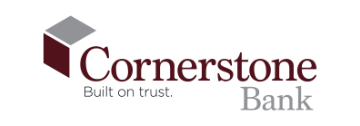October is Cybersecurity Awareness Month—the perfect time to review some basic steps we should all take to keep ourselves safer online. Scammers never rest, but vigilance and a little effort can help keep them away from your information, identity, and money. Here are 4 essential steps for cybersecurity.
Bulk Up Your Password Strength
Still using your dog’s name? Your kid’s birthday? It’s past time to up your game.
Scammers use software that can hack those simple passwords in the blink of an eye. The strongest passwords are random combinations of uppercase and lowercase letters, numbers, and symbols that differ for every website, app, and computer or network sign-in. Using the same password for multiple purposes may be easier on the memory, but it increases the damage done exponentially should that password become compromised. If you are concerned about keeping track of countless passwords, you might consider investing in a password manager. There are quite a few on the market, and they can be a great way to generate and keep track of multiple passwords for you.
Add a Layer of Protection with MFA
Before you think your master’s in fine arts will protect you, we need to explain that in this case MFA stands for multifactor authentication. Put simply, it means adding another step to the sign-in process. This way, if a password does become compromised, scammers run into another wall of protection before gaining access to your account. Typical MFA methods include receiving numeric codes by text or email, using an “authenticator app” (like Microsoft Authenticator), and biometrics like facial recognition and fingerprint identification.
MFA is available for most online accounts and apps. Check “account settings” or “settings & privacy,” or go to the website’s help or FAQ section to see how to turn it on.
Phishing: Don’t Bite
One way for scammers to avoid digital security is to go straight to the source of your personal information: YOU. “Phishing” is the term used for scams intended to get someone to inadvertently reveal personal information by opening a link or attachment provided. In some cases, taking this bait can even plant harmful software onto your device. Phishing can also come in the form of a good old-fashioned phone call.
The most common phishing scams come disguised as communication from trusted people or companies to lower our defenses and intimidate us into responding. For example, you may receive communication claiming to be from your bank, a credit card company, a social media company, or other supposedly trusted sources, often demanding an immediate response to avoid serious consequences.
The first thing to know is that no bank, credit card company, or any other reputable business will request personal information in such a message or call. If you receive a request in this way, it is most likely a scam, and you should delete the message (or hang up). If you’re not totally sure, reach out to the company using their published contact methods and ask a representative.
Watch out for shortened links or hyperlinked text, which may lead you somewhere very different from what they claim. Review the real destination address by hovering over the link—but do not click! Look closely at web addresses and check for any misspellings or typos (for example, facebo0k.com), or additional text before the domain suffix (such as facebook.security.com).
Don’t Ignore Those Software Updates
Installing the latest updates to your phone, computer, and apps can feel like an inconvenience, and it’s way too easy to put it off indefinitely. However, most updates contain vital security improvements that repair any weaknesses the company has identified in their security. It’s wise to make those updates just as soon as possible to best protect your personal information. And if you’re “too busy,” remember that most devices, software, and apps today typically have auto-update features that will install the latest versions in the background (that is, as you work) or at less disruptive times of day, like the middle of the night.
October is Cybersecurity Awareness Month, but hackers and scammers never rest. Stay vigilant, build some basic cybersecurity practices into your daily life, and remember we’re always here to help. Contact us today to learn more, or visit our Fraud and Security page for additional in-depth resources on staying cybersafe.



 Translate
Translate